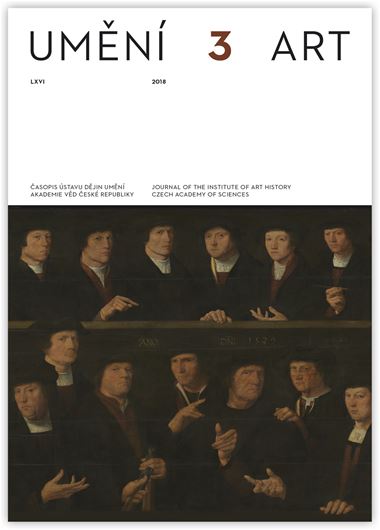Rostislav Švácha
Sigfried Giedion a české ohlasy jeho díla
Throughout its existence, the magazine Umění has published reviews in which Czech art historians introduce important art historical works from abroad to a Czech readership. These included a review of Sigfried Giedion’s Space, Time, and Architecture (1941), appearing in Umění in 1944, written by Erich Winkler, who was a pupil of Julius von Schlosser at the University of Vienna. Winkler’s review is surrounded by mystery. It came out during World War II, when the Czech lands were occupied by the Nazis, and references a book published in the United States, that is in the territory of the enemy. Moreover, the author was not a specialist in modern architecture. Winkler’s review is brief and does not describe the rich content of Giedion’s book in all its breadth; unfortunately, neither did the following Czech reviews of Space, Time, and Architecture from 1947 and 1948. Czech reviewers focused greater attention on Giedion’s older book Bauen in Frankreich (1928). In this book, Giedion, a pupil of Heinrich Wölfflin, introduced themes to the academic field of art history which were important for interwar avant-garde architecture. His idea that a central motivating force in the history of architecture is the history of construction systems especially interested Karel Teige, the leader of the Czech avant-garde, who sought to cooperate with Giedion through the international architectural organization CIAM. However, any deeper understanding between the two figures was prevented by Teige’s radical leftist beliefs and later by the political turmoil in Czechoslovakia in 1948. In the 1960s, the Brno art historian Václav Richter became interested in the book Space, Time, and Architecture. As in the case of Giedion, Richter followed the historical transformations of architectural space and proposed a parallel between the use of open space in modern architecture and the use of space in borrominian Baroque.
Full-text in the Digital Library of the Czech Academy of Sciences:
https://kramerius.lib.cas.cz/uuid/uuid:c4b96d8b-7cd4-41d6-a1bc-e290d373c829
< back

